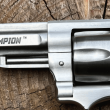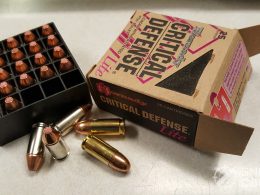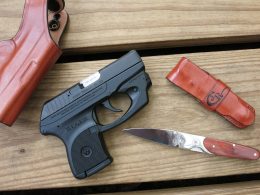There isn’t one unique and perfect solution for a scope mount because it depends entirely on your shooting skill, what you use your rifle for and how you use it.
But the real big question when it comes to choosing a scope mount is: Tapered or Flat?
It’s a common but incorrect assumption that a tapered base is stronger and more versatile because there are many different scenarios that would better suit a flat base. There’s an abundance of high quality tactical mounting systems that offer a few more plus points than a tapered system.
It may sound like an oversimplification but get the mounting system that suits your shooting style and skill. Don’t choose a mount because it looks cool on your mate’s rifle; your selection must be based on personal techniques. Start by assessing your competency. If you never shoot beyond 500 yards, then you won’t see any benefit in using a tapered base. If you shoot long distance, but your scope has 85 to 120 moa of internal adjustment, then a flat base is again more suitable.
Scopes should have enough internal adjustment to reach 1000 yards from a 100 yard zero, but scopes with less internal adjustment need a tapered base to get to 600 or 700 yards.
As a note, when first zeroing your rifle, note the sight’s actual mechanical zero so you have a solid starting datum and you’ll observe the real capability of your sight and rifle. Ideally, you could zero your rifle and scope combination at 100 yards, the precise mechanical zero of the telescopic sight.
But let’s distinguish between a flat and tapered base and explore their advantages and disadvantages.
The Flat Base
The benefits of a flat base offers practical comfort and good ergonomics. It has the best cheek bond for a scoped rifle and your head is not forced up off the stock, which keeps the cheek down on the stock. You don’t have to strain your neck to stay in place while acquiring your sight.
The flat base is lighter than the average tapered base but it’s still very strong in mating the base to the rifle and the rings to the base. It could also flex a bit more if the receiver’s action screw holes are misaligned, but that could sometimes work to your advantage. You could have a lap-in a scope ring that’s not completely aligned because of the base has a minor twist, or you could have a mount without any flex at all. If the mount doesn’t flex, the rifle’s receiver is forced to adjust to the scope mount, which is a problem with the tapered base when its mated to an out-of-true rifle receiver.
No lapping is needed on a scope ring set mounted to a quality tapered base, but it may be interfering with your action and accuracy when the bedding of the receiver is disturbed.
In short, the flat base has many advantages with disadvantages cropping up when shooting beyond 600 to 700 yards without a decent scope.
BONUS OFFER: Get your free shooting range targets to print at home!
Get your free targets to print at home!
The Tapered Base
Starting with the drawbacks of the tapered base, first is the cheek weld because going over a 10-moa taper is going to force your head up off the stock. When using a true 20 moa base (now obsolete), it was so high that you needed to modify the adjustable cheek rest to support your head by attaching something to the stock for a proper cheek rest.
Secondly, a tapered base can actually bend your action. The high-quality tapered bases like the IOR and Badger units on the PX, won’t flex when mounted on the rifle. It’s also very rigid, and that’s both a good thing and a bad thing. But if the rifle’s action is fairly true with the scope base mounting holes drilled precisely along the axis of the bore and in line, then you shouldn’t encounter any problems. But always check your rifle properly before mounting a tapered base because if there are any issues, it will likely cause the rifle to give way, not the mount. On the upside, a tapered base allows for keeping the existing glass and has the ability to go beyond any reasonable range with any scope combination.
Badger offers an extensive range of products for tactical rifles. One of the best and strongest scope mounting options is the Badger tapered one-piece base set that provides a totally aligned system for long range applications. The high-quality scope base is precise and crisp. The price for the 20-moa tapered base is reasonable and worth every cent considering you’re getting extra quality and precision.
Both the flat and tapered bases are great for long-range shooting, notably the latest M1913 spec bases. But all-in-all, both bases fulfil their purpose so it’s entirely up to you, your personal style and needs for assembly and shooting. If you’re not currently or don’t intend to compete or shoot at 1000 yards, then you have nothing to worry about if you can’t reach that far with the existing glass. If necessary, use hold overs with a mil-dot reticle to shoot 1000 and beyond on larger targets, not coke cans. And if you do become skilled at range estimation and elevation, there’s still the unpredictable wind — the equalizer of all long-range shooters.
To summarize, it’s all about assessing your skills and intentions before purchasing anything. It’s basic. If you don’t go long range, you don’t need a tapered base. It could help for training but making a big purchase isn’t practical if you’re not going to reap the full benefits. Evaluate what you want to do and how you want to develop your shooting. If you want to go long range, make sure you have the ability to do so before heading off on a hunt and using a deer as your target at 800 yards. Unless you’re an experienced crack shot, you’re being irresponsible with the risk of causing injury to the animal.









![Best Shoulder Holsters [2019]](https://www.snipercountry.com/wp-content/uploads/2018/06/Best-Shoulder-Holsters-2019-260x195.jpg)
